After a successful first eco-friendly adventure in Ciudad Real, I was thrilled to be invited to a second one, this time in the Spanish province of Albacete, still mostly unknown to tourists. This province is in the Autonomous Community of Castilla-La Mancha, an area not even Spanish people visit that much (except for Toledo). The trip, which was organized like the previous one by Soy Ecotourista Castilla-La Mancha, aimed to promote Albacete’s often overlooked, stunning natural spaces. As someone who didn’t have a picture in mind of this part of Spain, I was, again, pleasantly surprised. Join me on this ecotourism route in the province of Albacete, a hidden green gem in the center of Spain.
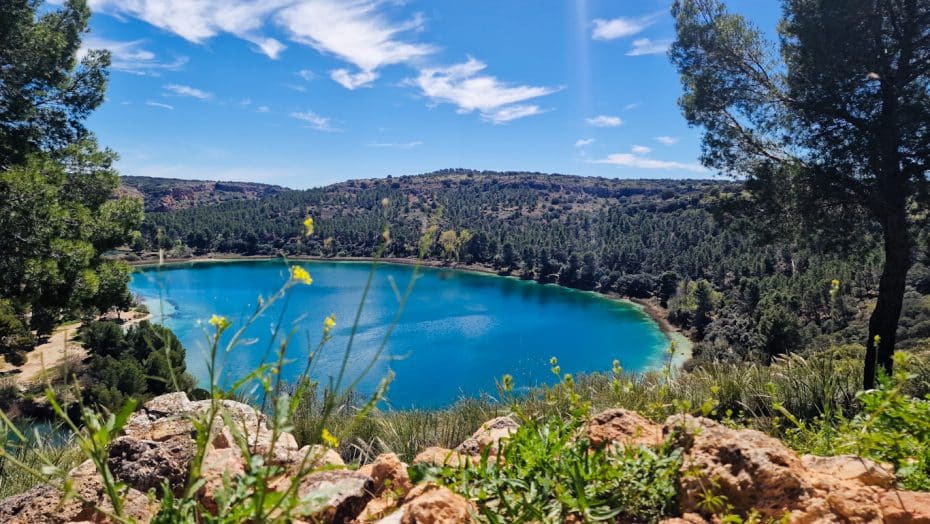
3-day Ecotourism Route in the Province of Albacete
Day 1
Morning
This second eco-friendly trip to Castilla-La Mancha started less smoothly than my first one. After miscalculating how long it would take me to reach Madrid’s Chamartin train station from my house and getting stuck in traffic, I sadly missed my train. Luckily, after talking to Jesús from Soy Ecoturista, who offered to pick me up at Albacete’s station while my trip companions were in the first activity, I hopped on the next train.
Still, I missed the morning and the first activity of the trip, which the other bloggers would later tell me was terrific. While I was on the train, they walked bare feet through watery caves, grounding and connecting with nature. However, I’m glad the rest of the day was in charge of the same local company because they were terrific, but more later.
After arriving at the Albacete-Los Llanos train station, I hopped on Jesús’s van and headed south to Elche de la Sierra. The ride to this small city, part of the Sierra de Segura mountain range, took about an hour. My ecotourism route through Albacete was officially starting.
Afternoon
I met the other three bloggers for lunch at the Restaurante Moreno, part of the Hotel Moreno, where we would stay for the night. The restaurant and the 2-star hotel are family-run local businesses with years of experience.
Our lunch started with a love-it-or-hate-it set of appetizers: Offal. This variety of meats included pig’s tongue filled with ham, a recipe from the hotel’s owner’s grandma, as he explained to us. Another delicacy in this group was pig brains, which weren’t my favorite dish. However, I loved everything else we tried.
Later, we sampled dishes like Atascaburras, a Castilla-La Mancha staple that includes cod, potatoes, and hard-boiled eggs. Finally, we had honey-dipped Pan de Calatrava for dessert, consisting of bread soaked in milk and caramel. My insatiable sweet tooth and I were delighted with this new flavor.
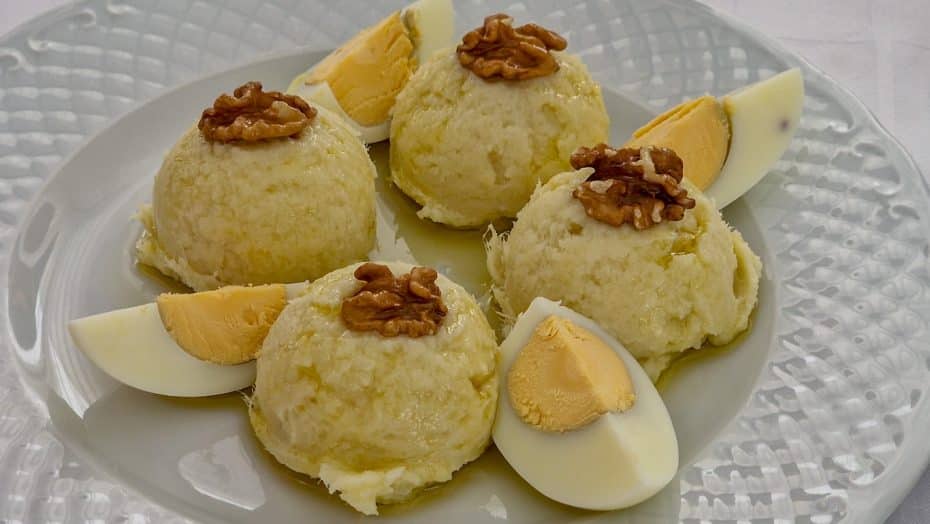
During lunch, we enjoyed the company of Cristina, from the company AKAWI SIERRA DEL SEGURA, who was in charge of all activities on the first day. And, after my morning absence, I’m happy I got to meet her because she’s simply lovely.
We went upstairs to our rooms to quickly freshen up and leave our bags before heading to the next part of the trip: Rock climbing!
After a short drive, we arrived at where we would be climbing, still in Elche de la Sierra, with two previously prepared climbing routes. I was nervous but felt like I had to jump on the chance after being late on day one. So, when Cristina asked for two volunteers, I raised my hand. It was only a short time before I had my helmet and climbing harness secured to start climbing on route number two, which was slightly longer and more complex.
Have you ever tried something for the first time and shocked yourself with how well you did? Well, that was me rock climbing. Before I knew it, I was at the top of the route, looking like a sweaty Iberian Lynx in my imagination. I enjoyed it so much that I even dared to go on a different path a second time. And, for someone who doesn’t do sports at all, I’m proud of myself and highly recommend this activity, especially with professionals like Carmen, who make you feel safe at all times. I’m looking forward to doing it again.
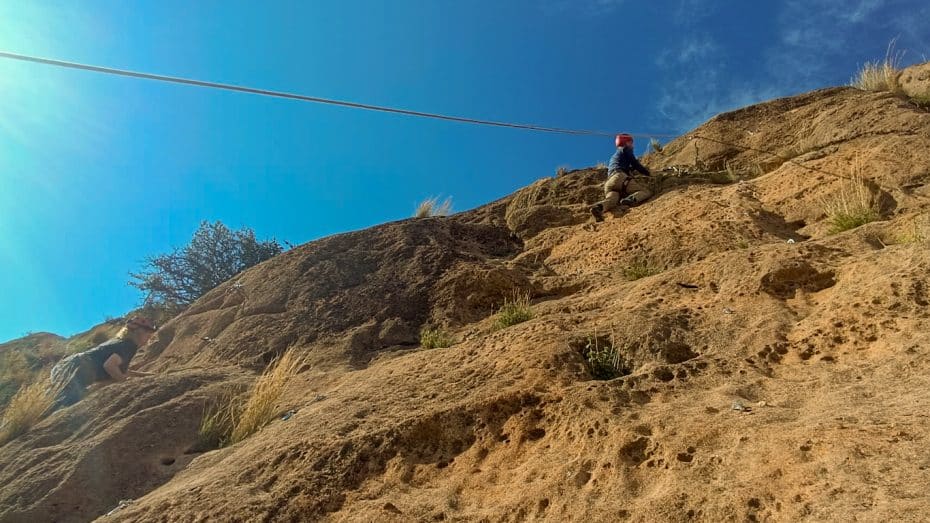
We finished climbing earlier than expected and drove to two viewpoints with stunning views. The first one was called Mirador de los Infiernos (Hells’ Viewpoint), and since a picture is worth a thousand words, take a look at the views below, which roughly count for 2000 words:
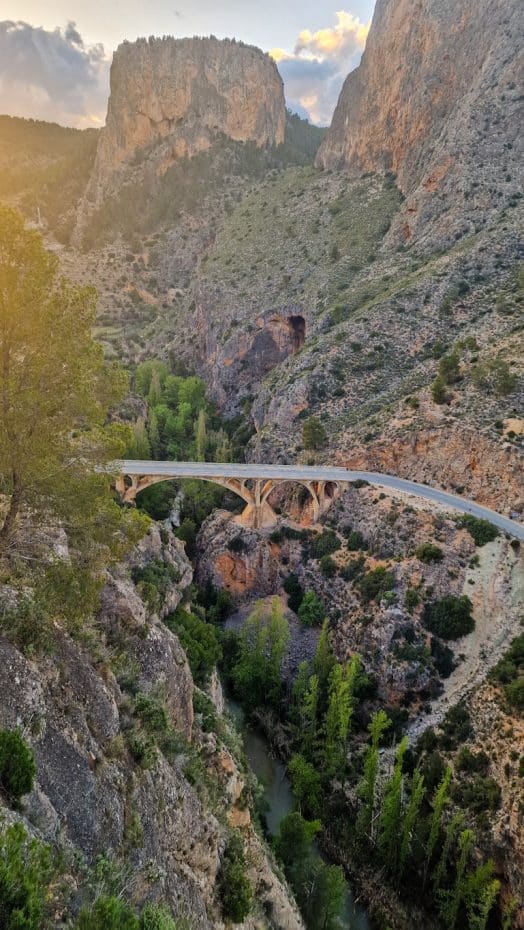
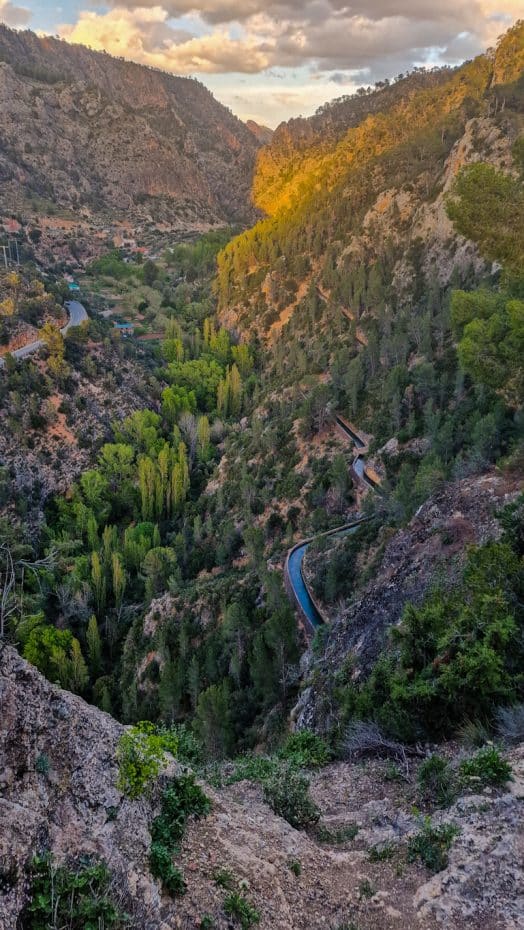
The second viewpoint was the Mirador del Diablo (Devil’s Viewpoint), and the views were breathtaking, too.
After this workout and stunning panoramic views, we headed back to the hotel and saw cute mountain goats on the way. If I didn’t know better, I would think the goats were paid actors to get us to fall even more in love with the area.
Night
For dinner, we walked to PUB Galería, a bar with modern decoration near the hotel. And I can say, this was my favorite meal during the whole ecotourism trip in Albacete.
We shared all the dishes, starting with a fresh tomato chaplain salad. Then, we moved on to a sizzling shrimp casserole, my favorite, pork loin in partridge sauce and grilled octopus. Afterward, we had lobster croquettes and a mouth-watering selection of desserts. We raised our glasses to toast for a successful first day and headed to the hotel.
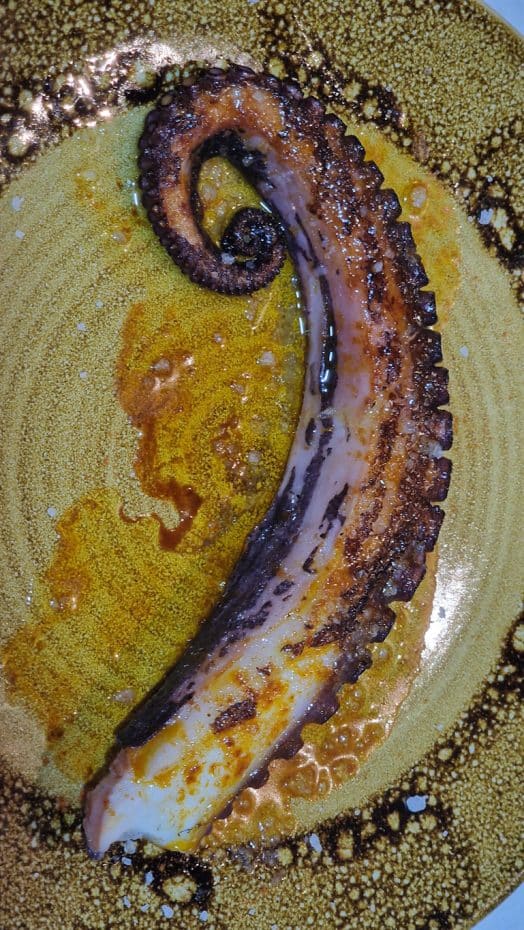
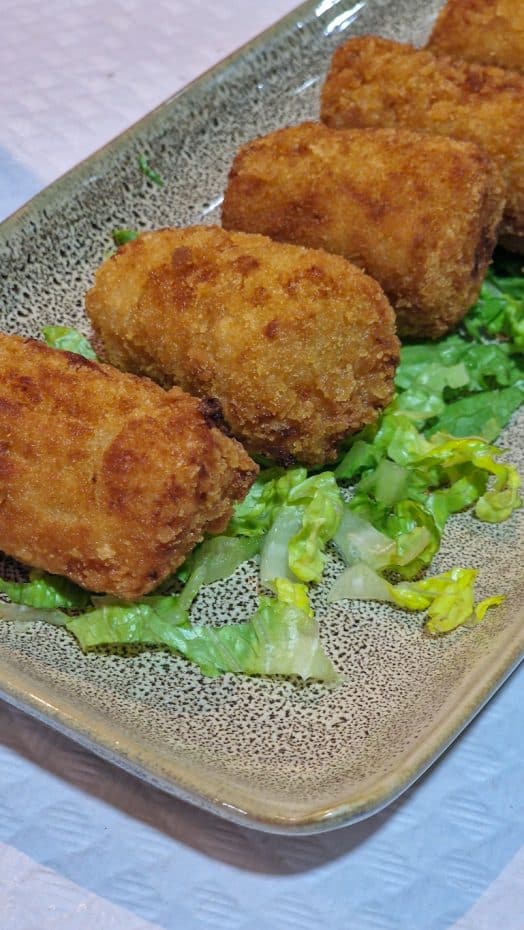
Day 2
Morning
The next day, I woke up with sore muscles and a need for caffeine. I repacked my suitcase and met the rest of the group downstairs for breakfast. We quickly had a few tomato toasts, orange juice, and coffee, hopped on the van, and headed towards the first activity of the second day. After a 45-minute ride west, we arrived at the Mundo River’s source, where Tali, from Mundo Aventura Riópar, welcomed us.
The Mundo River’s source is south of Riópar and is among the most visited places in the province of Albacete. It was even surprising to hear tourists speaking English while visiting this attraction on a chilly weekday morning.
In particular, the river’s source stands out for its location inside a cave on a cliff. It is considered one of the most beautiful river sources worldwide, called Reventón del Río Mundo. During a few times each year, an almost 100-meter-high waterfall cascades from the mouth of the cave. This natural wonder also forms other smaller waterfalls and pools in the area.
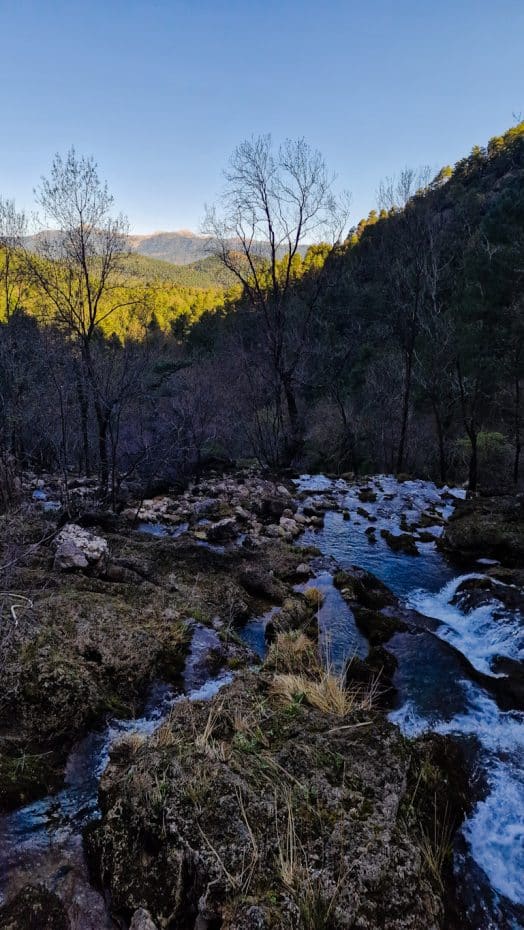
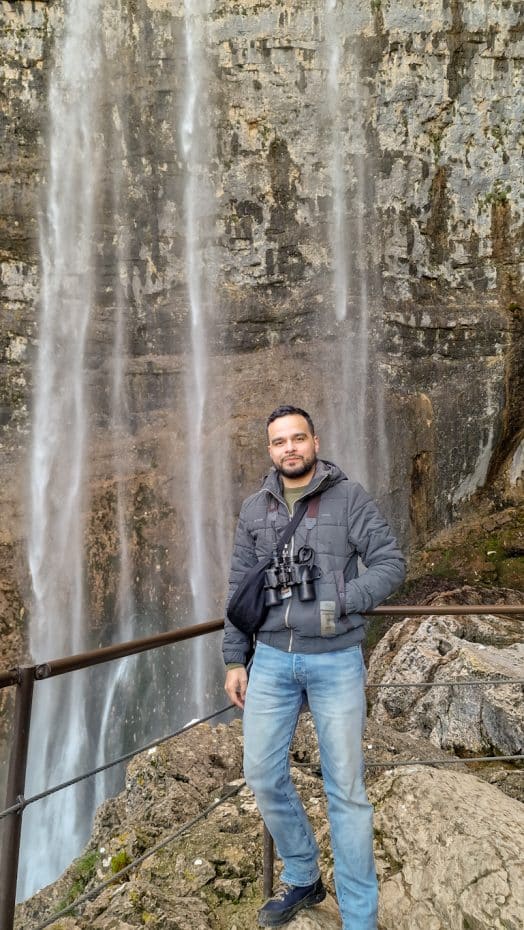
Although we missed the “reventón” by a few days, there were still plenty of active waterfalls in this gorgeous, postal-ready place surrounded by mountains. As Tali pointed out, this oasis has much more to see. There are so many plant species, including some medicinal ones and endemic plants of the region, as well as animals. So, you will benefit from a guided visit to truly understand what makes this place unique. Also, if you want personal advice, reserve a few hours to walk around the river’s source and be 100% present without rushing, appreciating its beauty.
Afternoon
After a short drive north, we reached Restaurante San Juan in the center of Riópar. This modest restaurant’s menu includes typical regional dishes for appetizers, main courses, and desserts. Yet, for some reason, I ordered bolognese pasta and chicken with potatoes as my starters and main course, respectively. I could get both things literally anywhere else in the world. However, both dishes were quite good, and the portions were generous. The dessert, another Calatrava bread, was incredibly delicious.
So, with a full tummy, we headed west and were supposed to go north after to reach the town of Alcaraz. Instead, since we had some extra time, one of my fellow bloggers suggested we stop at Riópar Viejo (Old Riópar). It turns out that this small medieval town, which was not an official part of our ecotourism tour in Albacete, would be worth it.
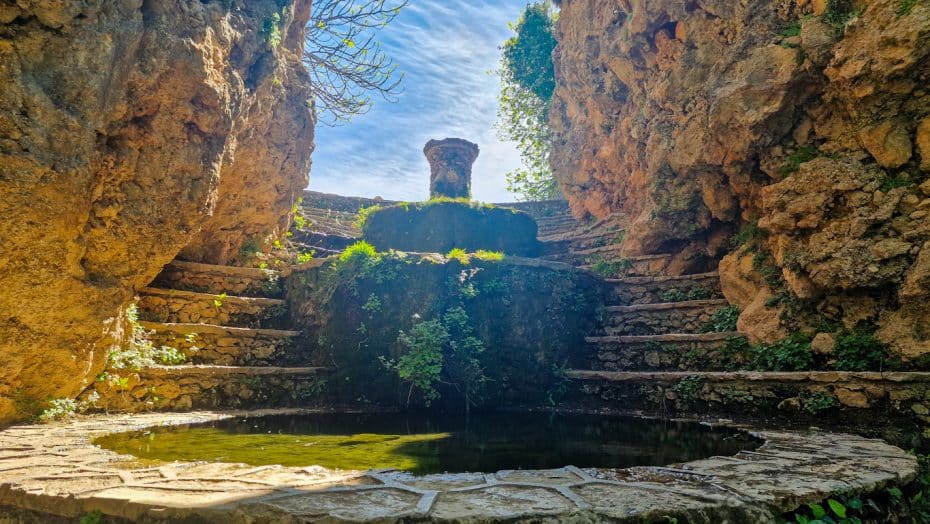
Riópar Viejo is one of the most charming towns in the province. It is on a mountain over a thousand meters high, and the views from there are already enough reasons to visit it. Walking through its small, stoned streets, you will see some cute hotels and restaurants. But this town’s highlights are its gothic-style church and the ruins of its castle, with a few graves surrounded by nature around it. However, it’s worth saying that few people live in Riópar Viejo nowadays, and most of its businesses are closed. So, it is a place to visit and wander around, imagining what was and taking excellent pictures.
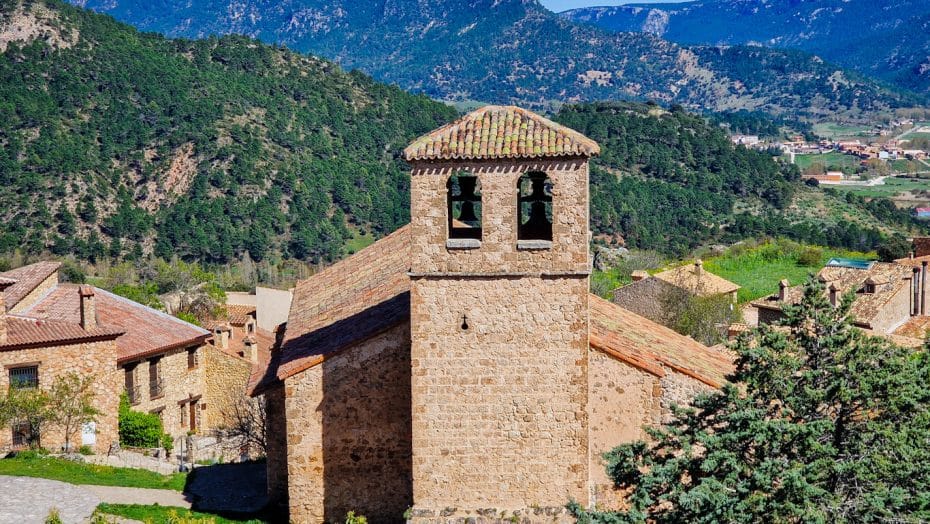
We left Riópar Viejo behind and headed north towards Alcaraz for less than 40 minutes. Even with an extra stop, we arrived earlier than expected. We were told to wait for our guide from the city’s tourist office, who was showing Alcaraz to another group booked before us. We would later also know that the group got to town late and were still going to do the entire visit, meaning we would have to wait a little longer, even though we had arrived early.
No one appreciated waiting after a long day of trekking and walking doing ecotourism around the province of Albacete. It’s a shame, too, because Alcaraz is a fascinating place. When we finally started our visit, around 40 minutes late, we learned about the city’s unique, intricate knotted carpets. These luxurious wool carpets, classified as Intangible Cultural Heritage by the Ministry of Culture, take a long time to make. This tradition comes from the Middle Ages and was learned from the Arabs who ruled the area.
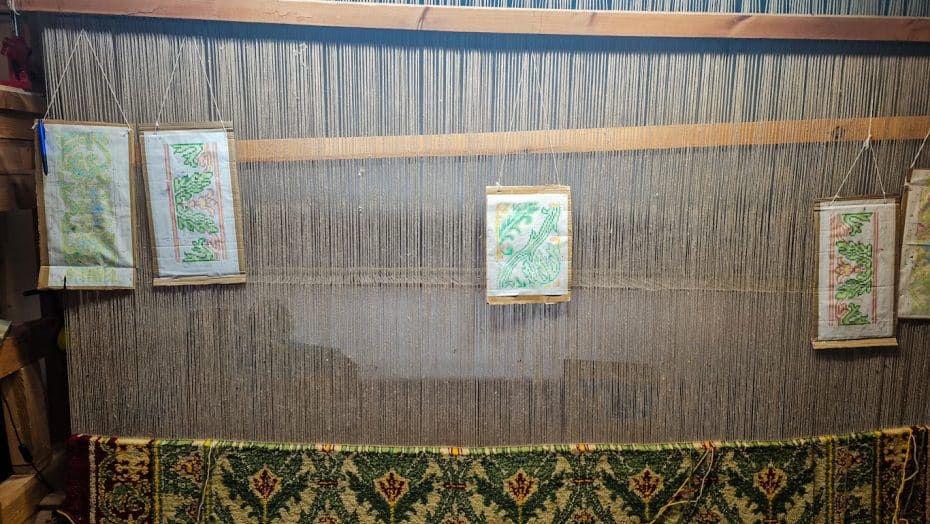
We also entered the Church of la Santísima Trinidad declared a Spanish Cultural Heritage. This temple has a Gothic facade and a tower that mixes Gothic and Renacentist elements. But the most fascinating part of the church was inside. The altarpieces made by the artist Juan de Borgoña were discovered in 2020, and after a long restoration process, you can see them on display. These pieces represent scenes like The Annunciation, The Nativity, and The Adoration of the Three Wise Men, among others. Previously, these eight works of art were under thick layers of plaster on the main altarpiece of the church.
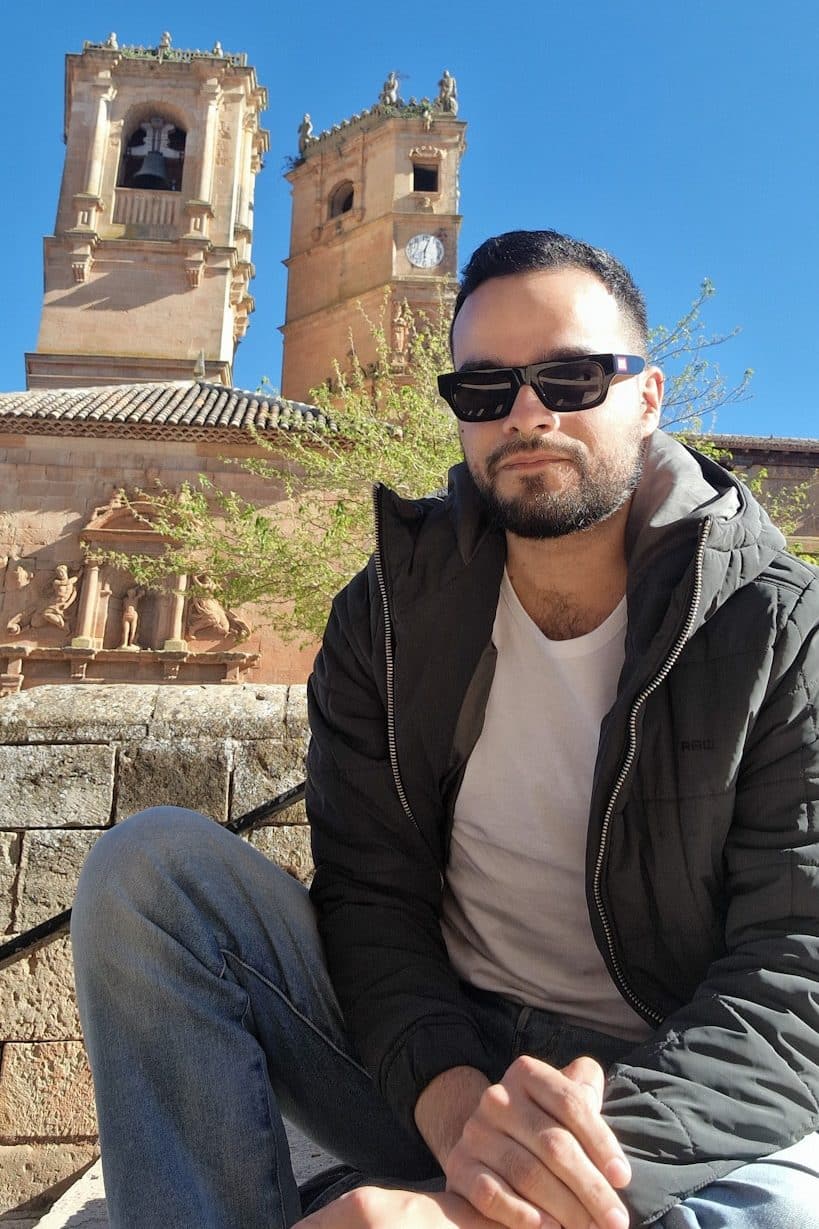
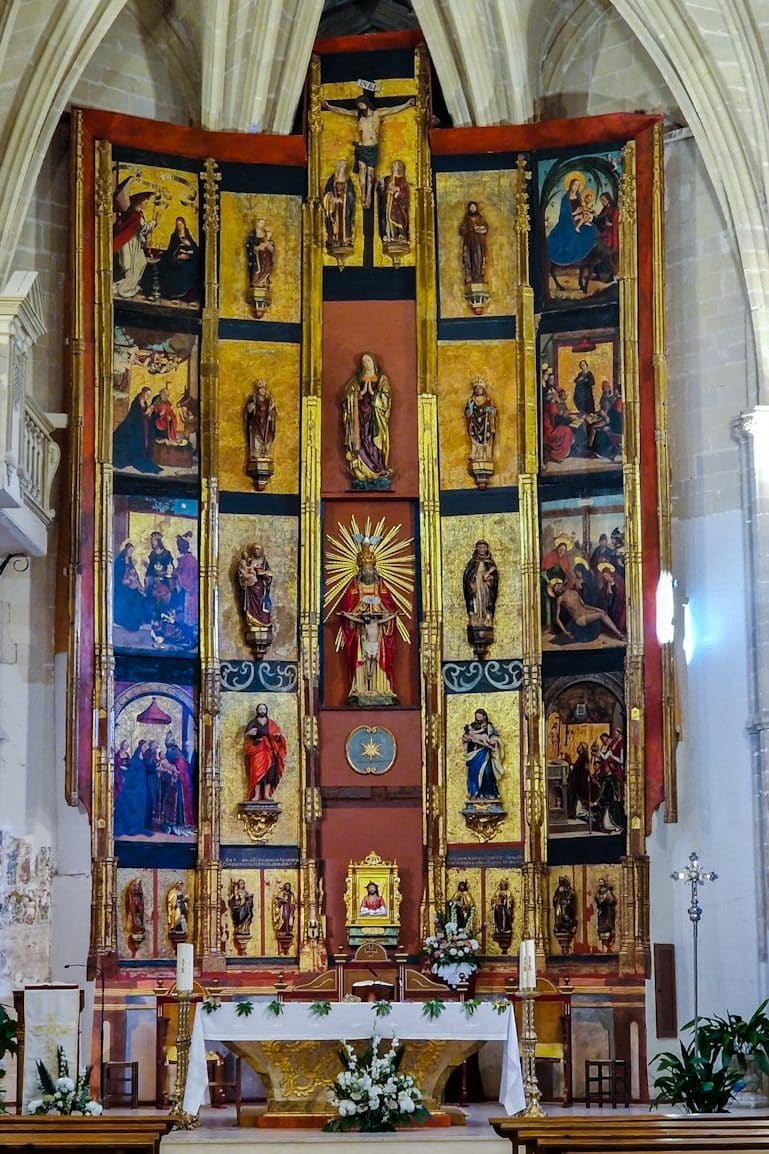
We left Alcaraz as the sun set and drove north towards El Bonillo, a small town around half an hour away. Once in El Bonillo, we searched for our hotel for the night: Hospederia Casa Emilia This accommodation has a hunter theme that may differ from everyone’s taste, particularly if they’re vegan. However, its rustic charm is undeniable.
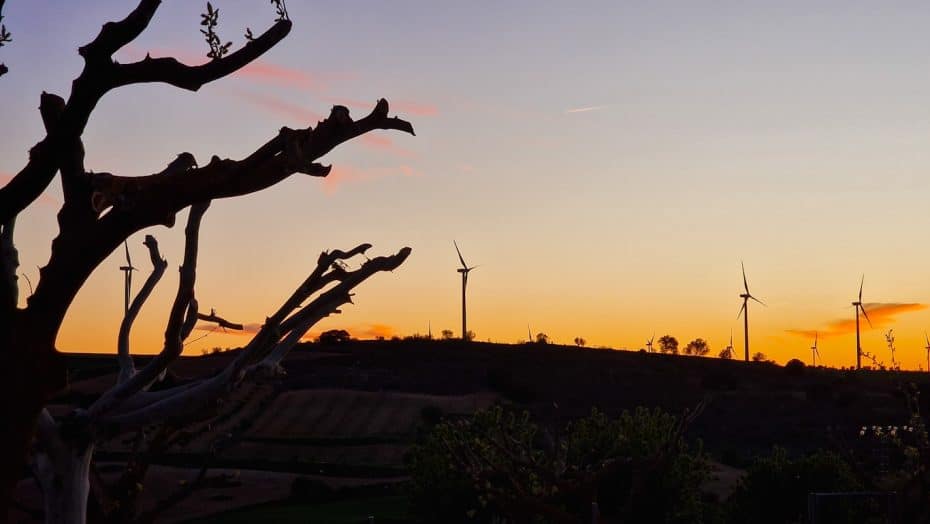
Note: Although when I talk of ecotourism in Albacete, you may not think of hotels with hunted animals as decorations, this type of travel is about supporting the local community and its economy. Hence, hunting can be a part of it as long as it is responsible for the natural surroundings and is sustainable.
Night
Our time was limited before the last activity of day two, so we met at the hotel’s restaurant after dropping our bags off in our rooms. For the entry, I ordered the best Caesar salad I’ve had in Spain from the menu (with a beer because life is all about balance). Then, I asked for a grilled pork with potatoes and vegetables for my main course. Lastly, I had a chocolate cake slice for dessert. Everything was super tasty.
With an excellent taste in my mouth, I climbed into the van, and we drove through dimly lit streets until we met Juanfer from AulaUniverso and Diego from LocusFoto. What would we be doing? You may be wondering, well, we were about to do some astrotourism, and I couldn’t be more excited. After all, we were in a Starlight destination, meaning that the conditions were perfect for seeing the stars mainly due to the absence of light pollution.
We started with Juanfer explaining how to always find the North Star in the sky without a device. He also explained how astronomical events like eclipses occur, the earth’s movements, and other essential and not-so-basic astro facts. We also used an app to find the constellations in the sky. So, if, like me, you grew up loving astronomy and may or may not be obsessed with astrology, you will love this activity. I even stopped noticing how cold it was after a while.
Then, Diego taught us how to take excellent night sky pictures with only our phones and a tripod. His lesson involved the correct phone settings and tricks to capture the perfect night shots without a professional camera. To top things off, we even looked at the stars and constellations through professional telescopes. I will remember this experience for a long time.
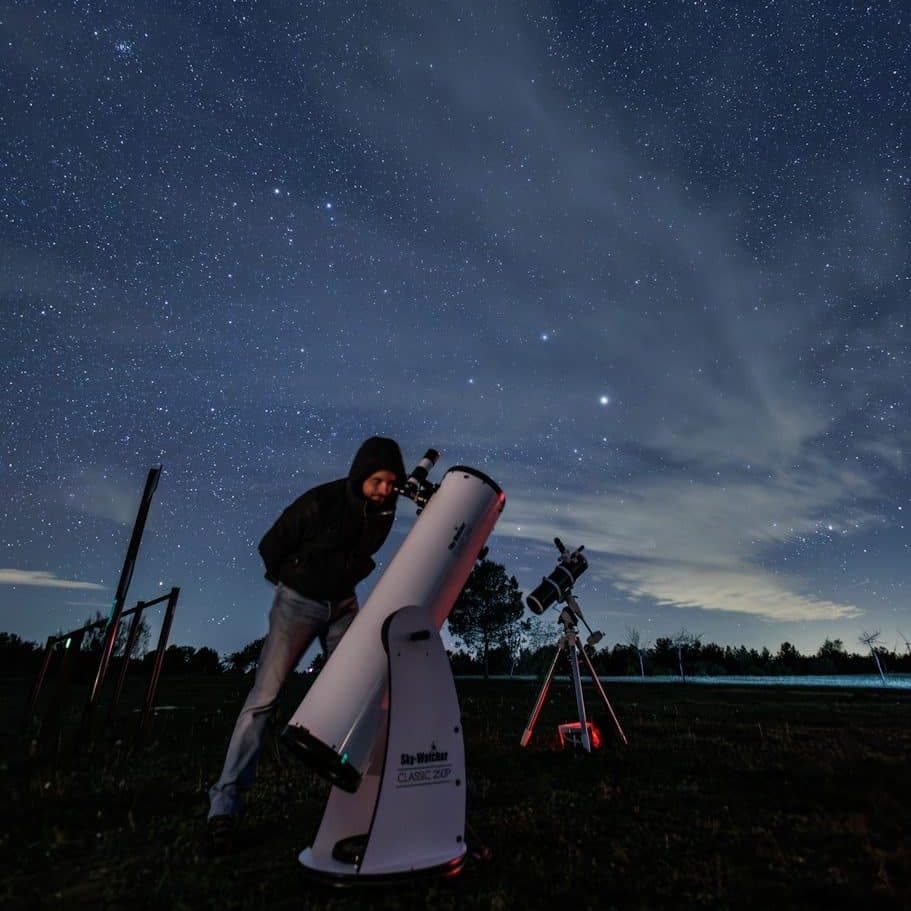
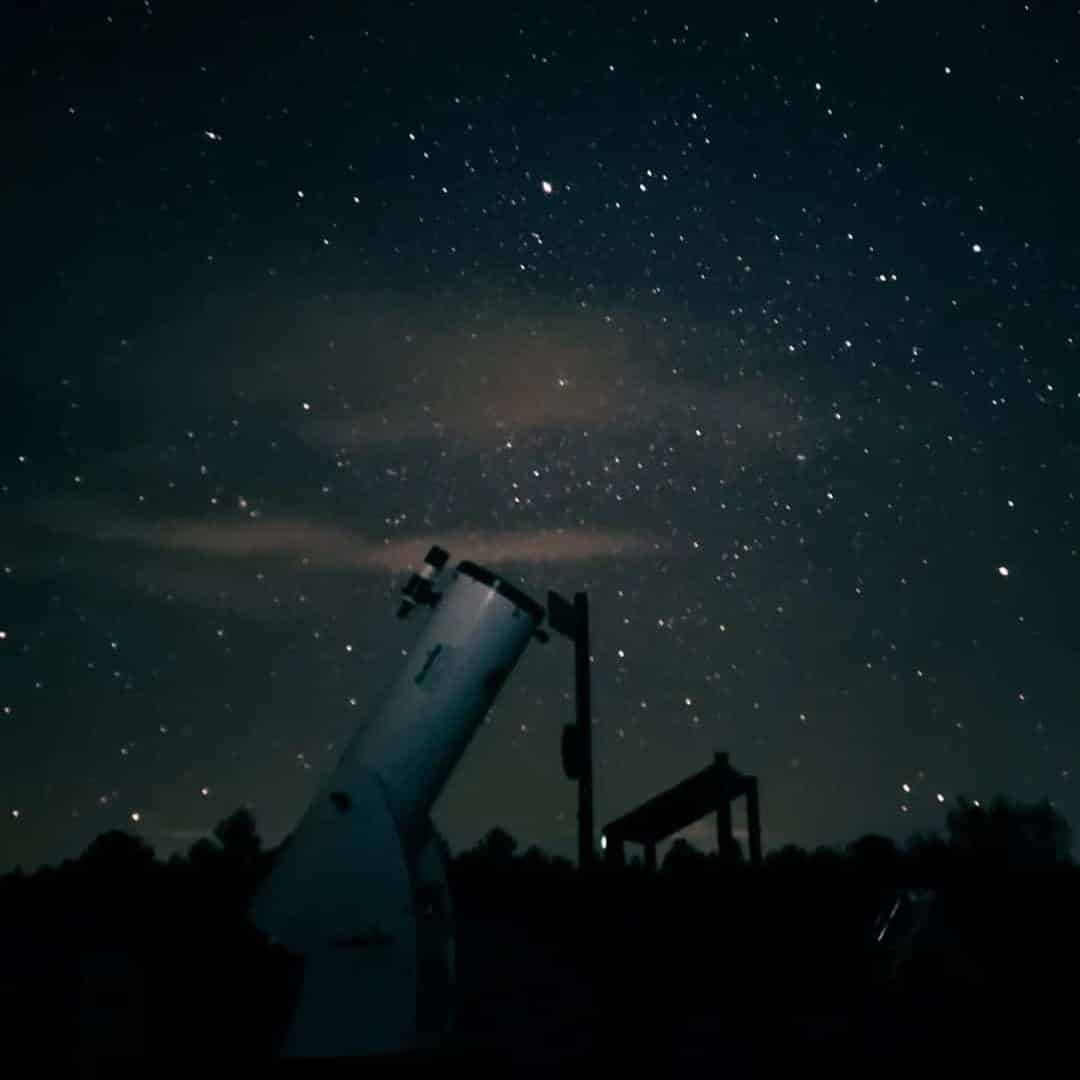
Day 3
Morning
On the final day of our ecotourism trip in Albacete, we woke up early and had breakfast at the hotel. Like the day before, I opted for tomato toast, a strong cup of coffee, and orange juice, but I also took a bit of a cupcake, which was also delicious.
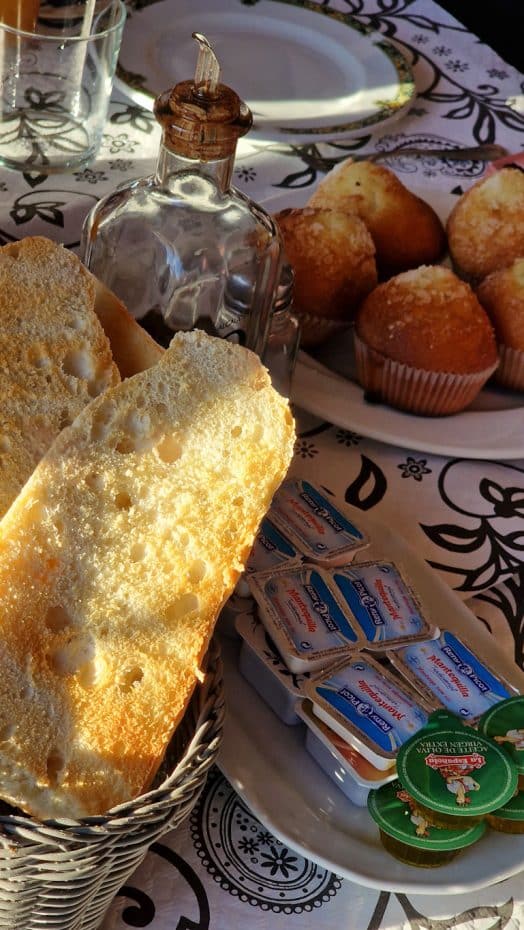
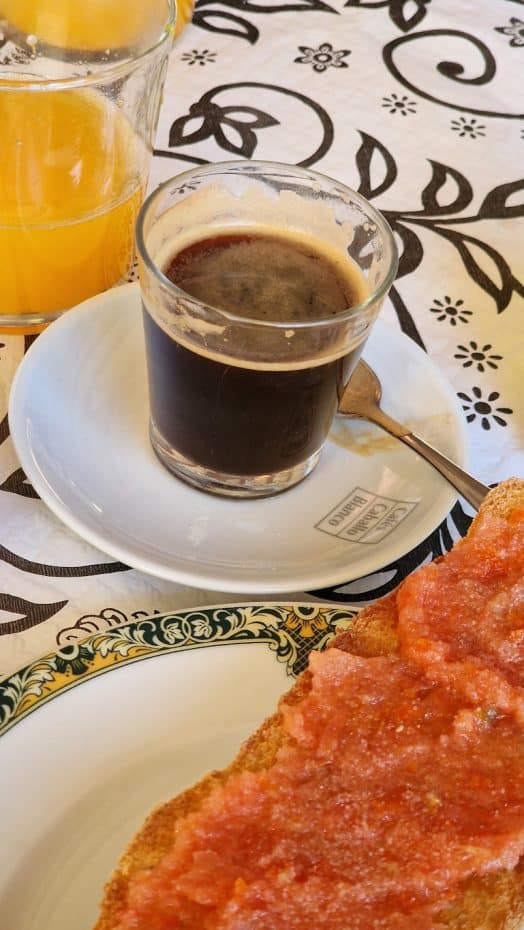
We hit the road through El Bonillo and Campo de Montiel and towards Lagunas de Ruidera Natural Park, to the west. However, before getting to the park, we would be birdwatching with Destinos Manchegos.
Specifically, we would watch steppe-land birds. These bird species get their name from living in arid areas with only small clay ponds that fill up with rain as their water source. Therefore, if needed, these species can spend several days without water during dry seasons. Steppe-land birds usually live in cereal fields, eating what the farmers live behind. However, many are in danger with these fields becoming less common nowadays.
Spain has one of the world’s last and most significant steppe-land populations. During the birdwatching portion of our ecotourism route through Albacete, we first stopped at a bird observatory. From there, we saw different types of birds, including the impressive great bustard. This endangered species‘ male is among the heaviest flying birds worldwide. Typically, a male can weigh from 13 to 40 lb (5.8 to 18 kg).
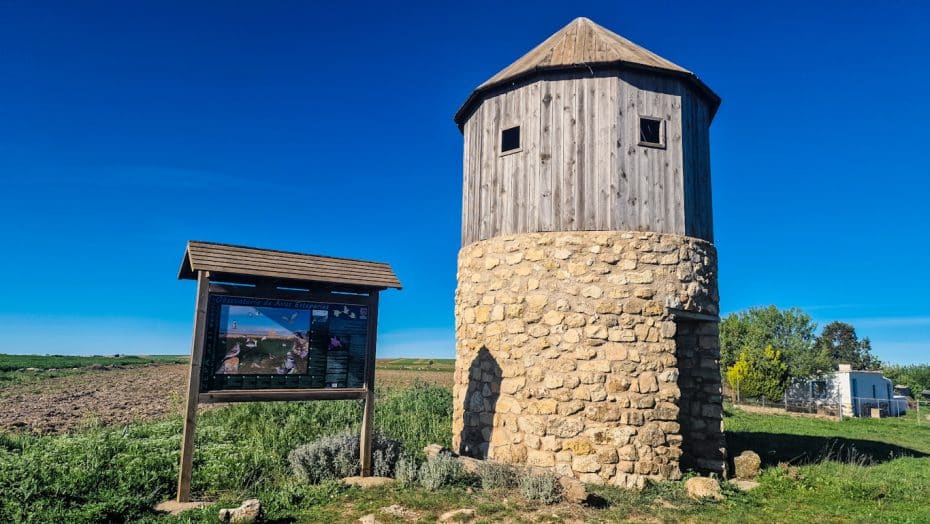
During mating season (around March), the males compete for the female’s attention, trying to impress them with their size and feathers—they “dance” around the females in a slightly similar way to a peacock. We kept moving towards the Lagunas de Ruidera with our binoculars and were lucky enough to see another great bustard and other birds. So, if you’re a birdwatching enthusiast, I highly recommend booking a tour with Destinos Manchegos.
I saw photos of the Lagunas de Ruidera Natural Park before the trip, and my expectations were high. Now, I can say that the park is even more beautiful in person.
Known as the Castilla-La Mancha’s oasis, this park has 15 lagoons with different names, sizes, and depths. The lagoons also have various shades of color, ranging from bright turquoise that reminded me of Paxos and Antipaxos, near Greece’s Corfu island, to emerald green and deep blue. The place is so gorgeous that I almost ran out of memory on my phone from all the photos and videos I took. Moreover, some of the lagoons in the park are suited for swimming, fishing, and kayaking.
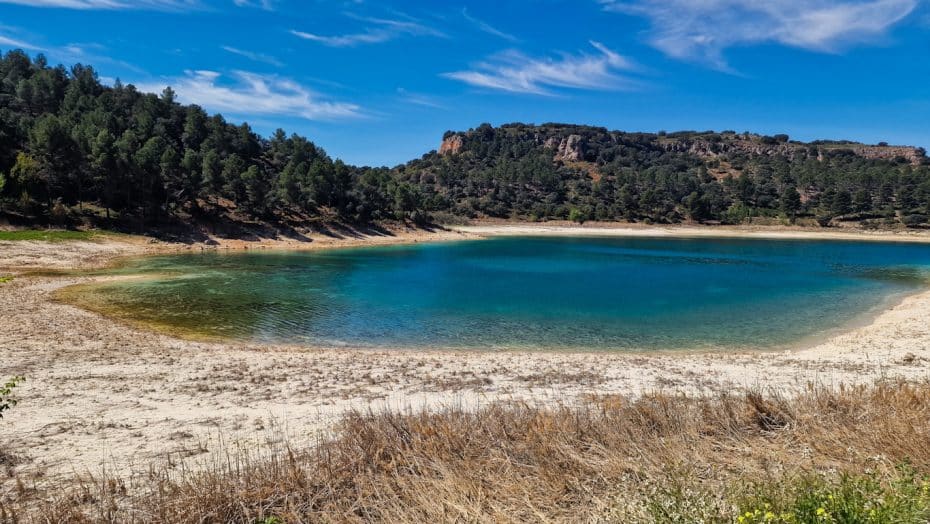
We explored the park for hours, enjoying its almost overwhelming beauty from every angle and viewpoint. I only wished we had more time. So, please remember to leave at least a few hours to visit this fantastic park, which is also perfect for trekking, cycling, and walking.
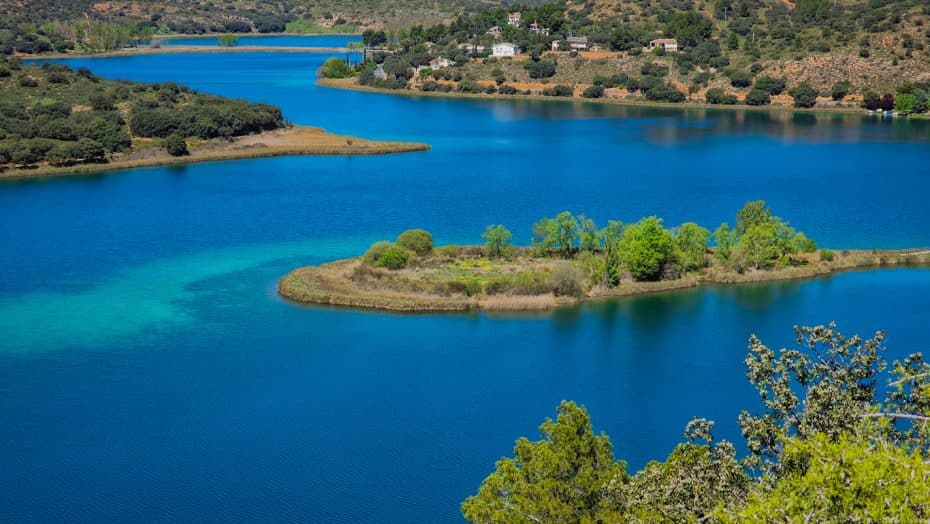
Although it is only reachable by car, the drive to Lagunas de Ruidera is well worth the effort. I hope to come back soon. However, I was warned that, during the summer, the heat and crowds may be too much to handle, so I pass that knowledge on to you.
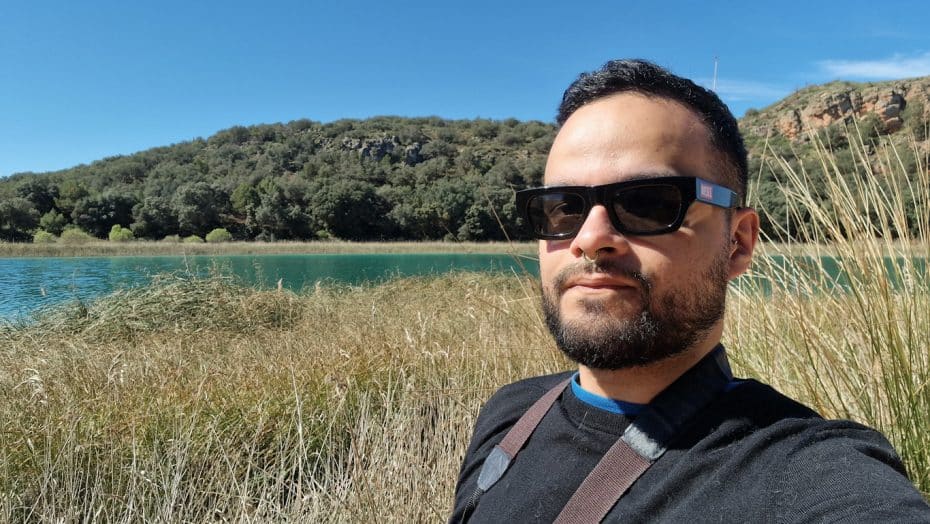
Afternoon
We drove to the nearby Restaurante Guaidiana for lunch, racing against the clock to catch our train back to Madrid. We ordered the tasting menu to share, which probably wasn’t the brightest idea time-wise, but it was all incredible.
Among my favorite flavors were the partridge pate and migas, a traditional dish for hunters with leftover bread crumbs and other ingredients. Another standout was the gazpacho manchego, a type of brothy stew served hot with pieces of rabbit, partridge and other bushmeats. For dessert, I had an excellent tiramisú.
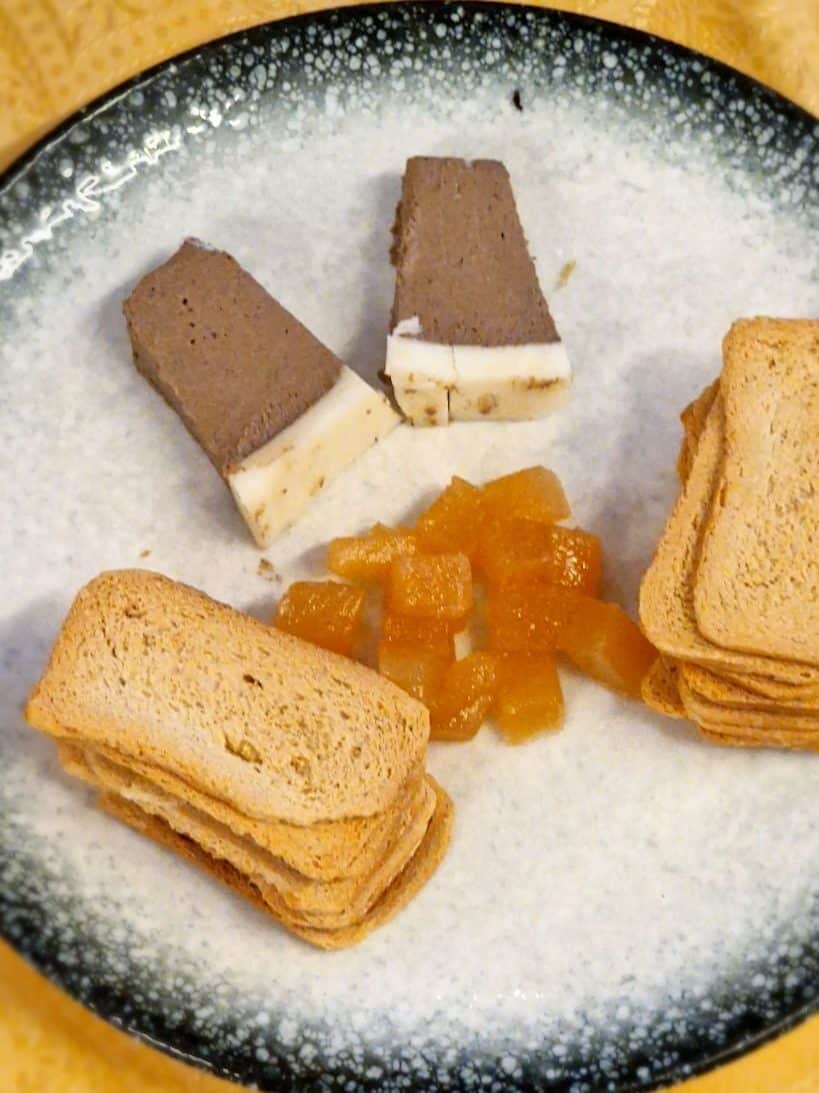
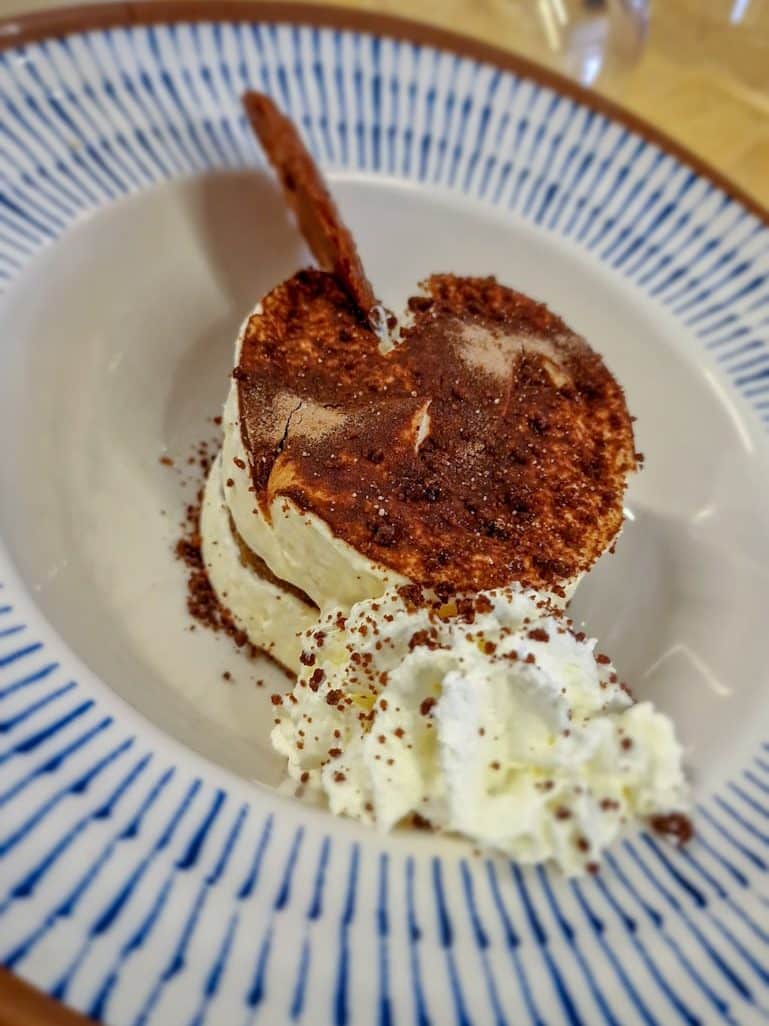
After this last meal, we raced to the Albacete – Los Llanos train station and ended our ecotourism route on a high note.
What do you think of this ecotourism route through Albacete? Would you like to include more trips like this one on the blog? Let me know!


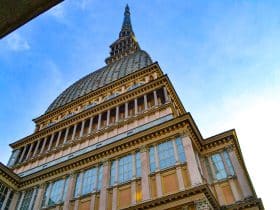

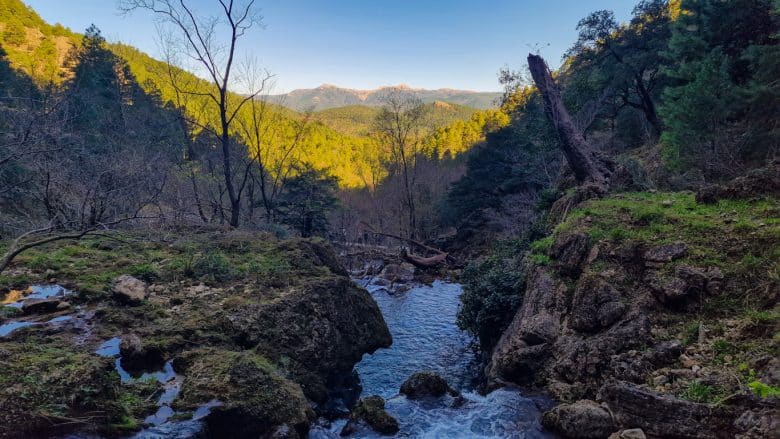
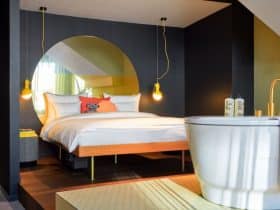
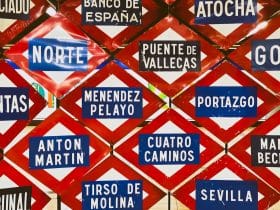
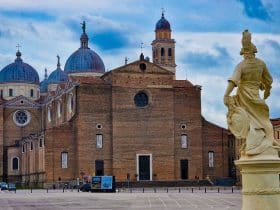












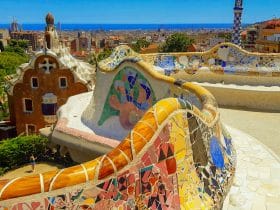
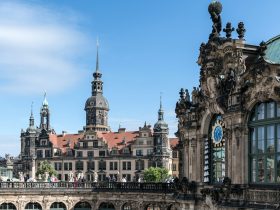
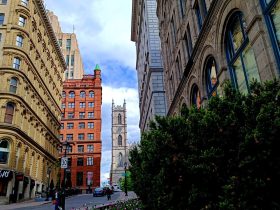
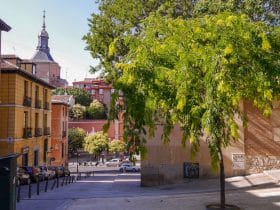
Leave a Reply
View Comments